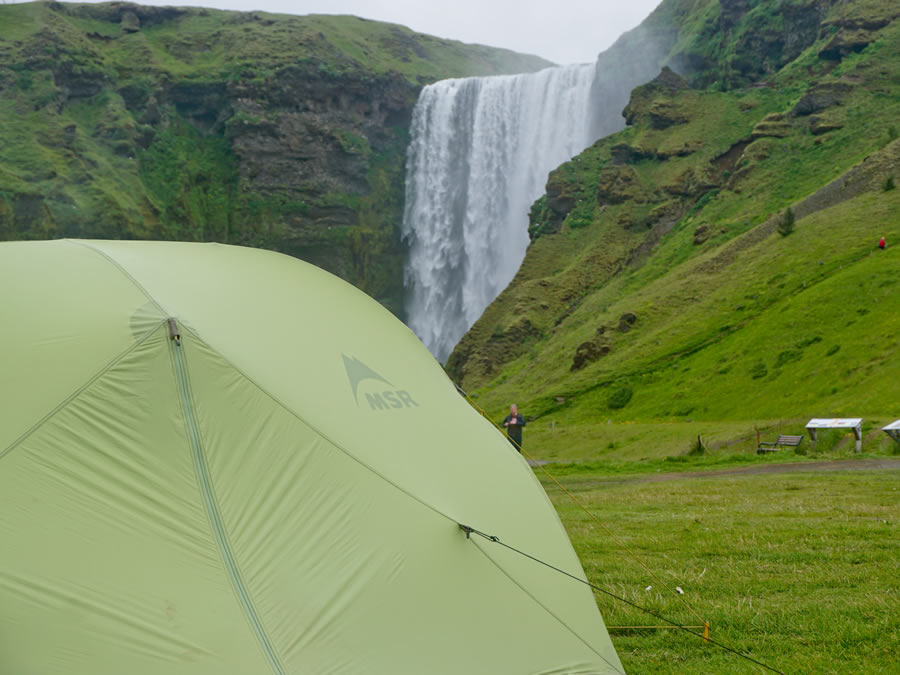MSR Hubba Hubba HP Review
Published August 2016
I don’t recall what first prompted me to write this review.
It could be the way that several of my friends, after a night in the tent, announced their jealousy and headed off to buy their own. Or perhaps it was the transformation that saw me initially fearful it might collapse in a strong breeze, but later willing to traverse the notoriously windy Icelandic highlands with this tent as my sole means of shelter.
The Hubba Hubba has a great name; I’ve yet to grow old of saying it. I normally follow up by reciting Cascade Designs’ naming for the entire series: Hubba, Hubba Hubba, Mutha Hubba, Papa Hubba. The Hubba Hubba is their two man model, first introduced back in 2004 and weighing in at a respectable 1.64kg. Re-launched in 2014, I’ve been using it intensively for nearly two years and would argue that you’d be hard pushed to find a better all-rounder, capable of handling the rigours oflightweight, long distance backpacking as well as the more spacious and comfortable desires of a weekend’s car camping.
“Hubba, Hubba Hubba, Mutha Hubba, Papa Hubba...”
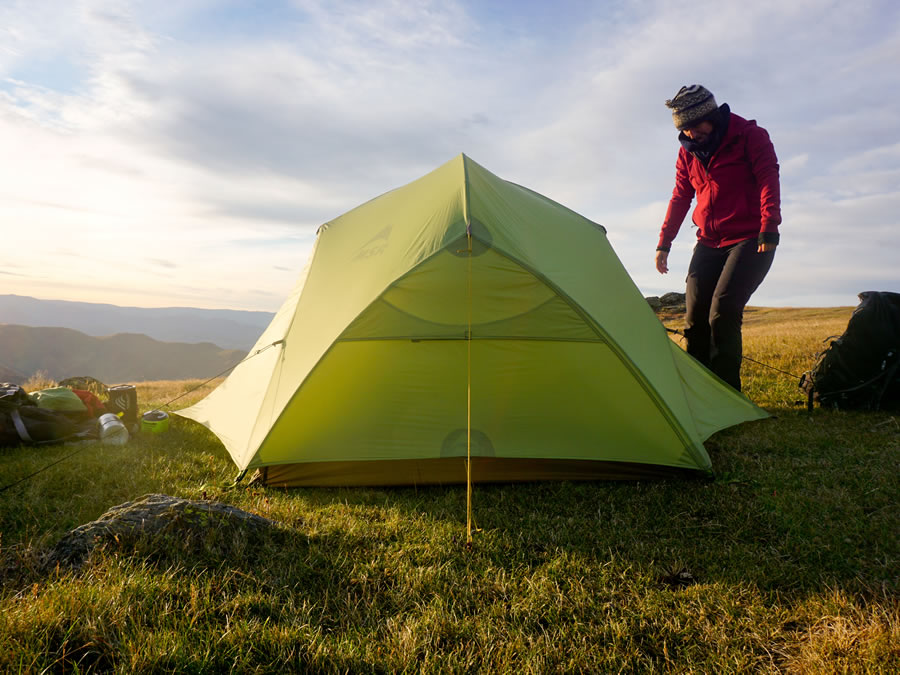

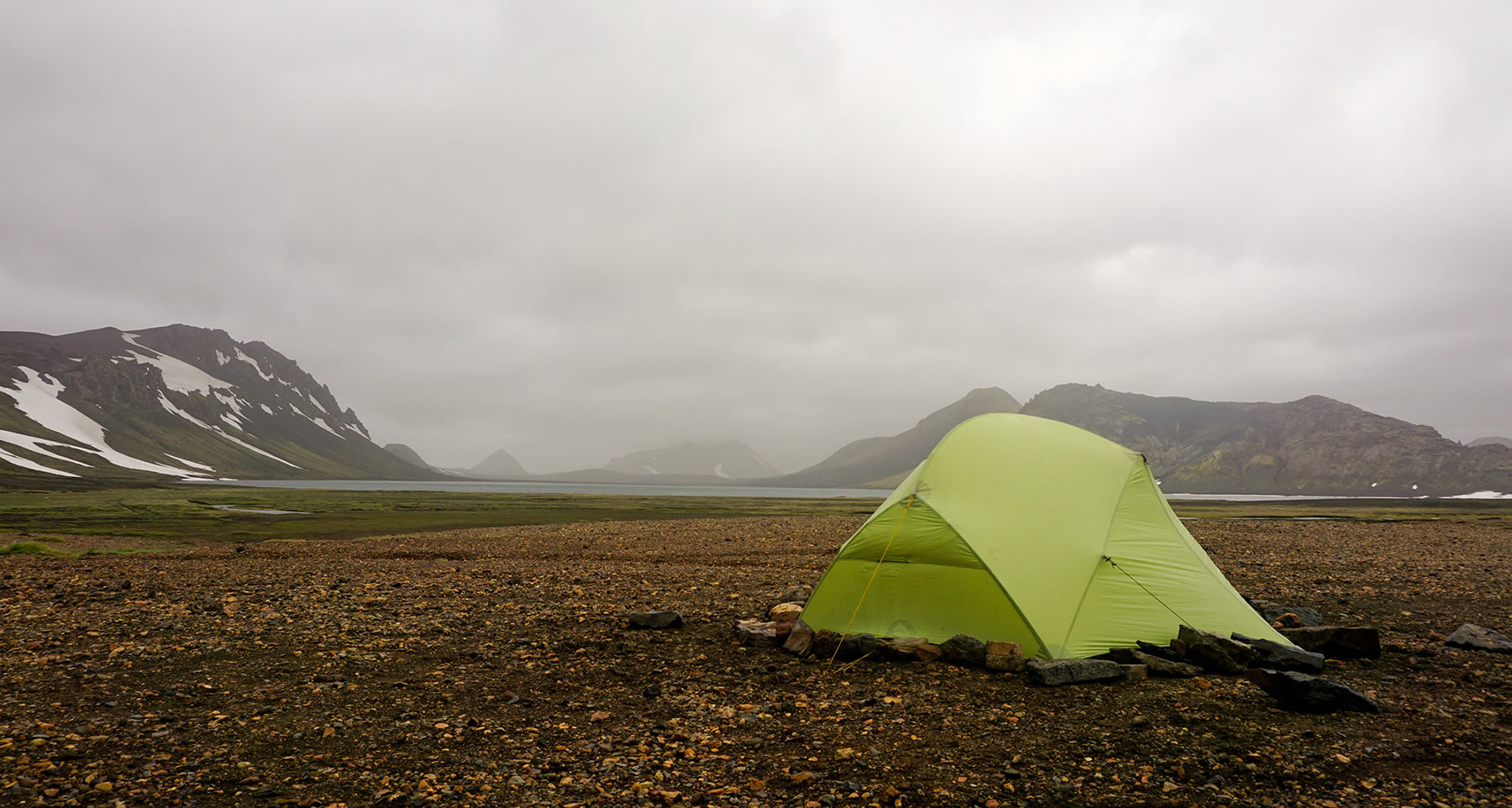
The pitching is a fairly standard inner –> poles –> outer routine: not to the liking of some but the tent pitches fast and I can’t say I’ve had any real challenges when pitching in wet weather. I bought the optional footprint and now use it as a matter of course to protect the base of the inner on rough ground. It includes ties and pole holes should you wish to pitch the tent outer only but I’ve never felt the need. The poles come together as a single spider, which when slotted together and held aloft evoke within me a desire to murmur in the voice of a garbled radio communication (nobody ever finds it funny). Fitting the outer is simple enough but requires some care to make sure the ends of the stubby centre pole are fitted first, else they poke worryingly firmly into the outer fabric. The whole tent will stand strong without any pegs and needs just six to anchor all of the corners.
It is vitally important to appreciate the differences between this tent, the Hubba Hubba HP, and its inferior brother the Hubba Hubba NX. More appropriate perhaps for the American climate, the NX is wholly unsuitable for UK weather and our regular companion of wind-blown rain. The NX differs on a number of important points, chief amongst them are its predominantly mesh based inner (making the tent significantly colder) and an outer flysheet which pulls down not nearly as far around the edges. Combined with the lack of reinforcement near key pole attachments, lack of end guylines and thinner pull cord on the peg loops the NX is a markedly inferior product. You have been warned!
“More appropriate perhaps for the American climate, the NX is wholly unsuitable for UK weather and our regular companion of wind-blown rain”
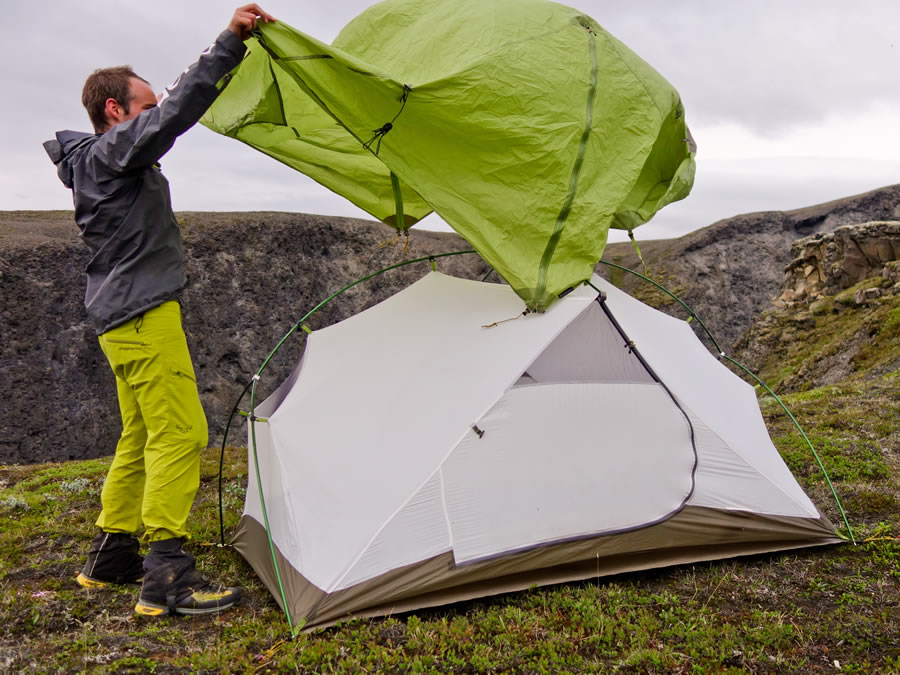
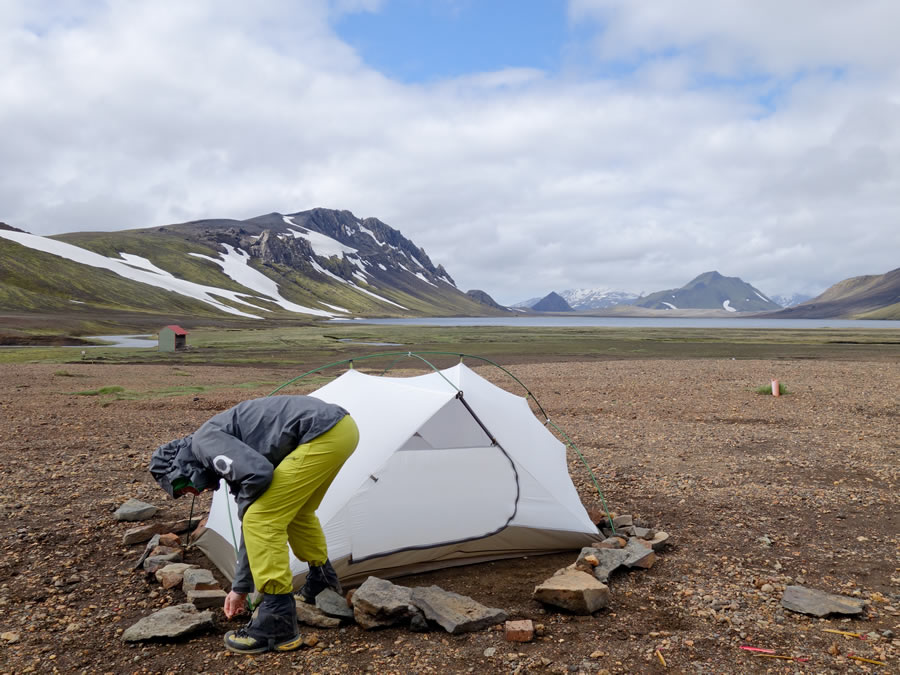
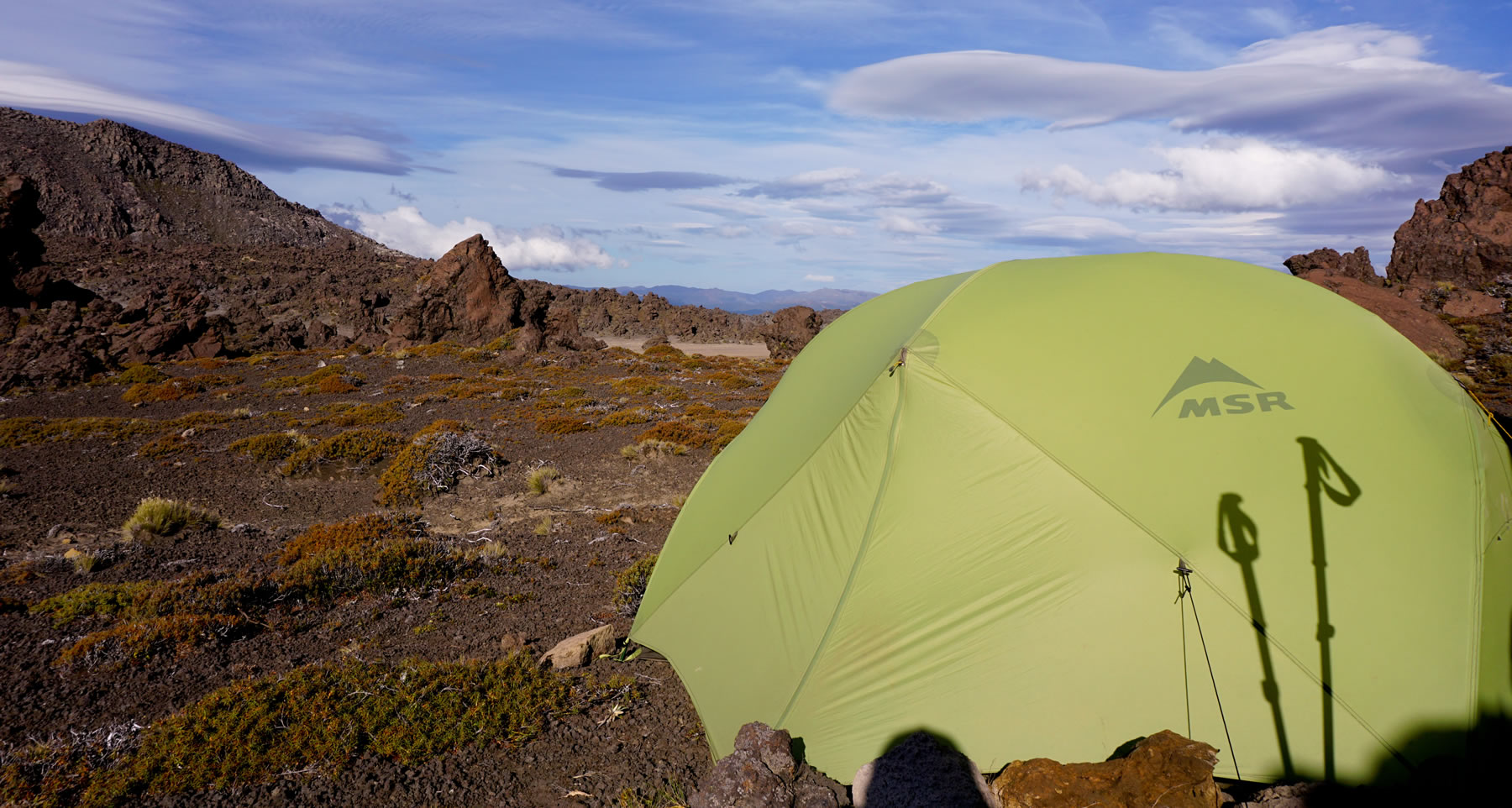
My tent was supplied with two guylines, but I note that more recent sales have shipped with four. The guylines attach onto each end and I ran mine through the tiny peg loop at the bottom to create a triangle which can be tensioned from each edge as required. Particularly in strong winds there is an appreciable variation in the stiffness of the tent and despite the relatively square footprint it is worthwhile orientating the slightly shorter sides such that one faces into the wind. A strong sideload of wind on the door panels has a tendency to bow in the tent edges and can result in an unfortunate buffeting to the head during the night. Unpleasant, but unlikely to cause permanent damage. Thankfully this can be easily solved by attaching a makeshift guyline to the ties intended for holding back the doors and I’d strong suggest you replicate this modification yourself. I’ve also appreciated the symmetric design of the tent on many occasions, enabling me to pitch the tent first and then decide which way around to sleep afterwards.
Compared to the traditional semi-geodesic design of the classic North Face Tadpole, this tent exemplifies what can be achieved with a keen focus on increasing the space-to-weight ratio. The inside is spacious with ample room for two roll mats side by side. The high, flat roof permits both occupants to sit upright facing one another. In fact, the whole interior feels appreciably larger than any other lightweight two man tent, which has made the evening routine of sorting and repacking gear a breeze.
“A strong sideload of wind on the door panels has a tendency to bow in the tent edges and can result in an unfortunate buffeting to the head during the night”

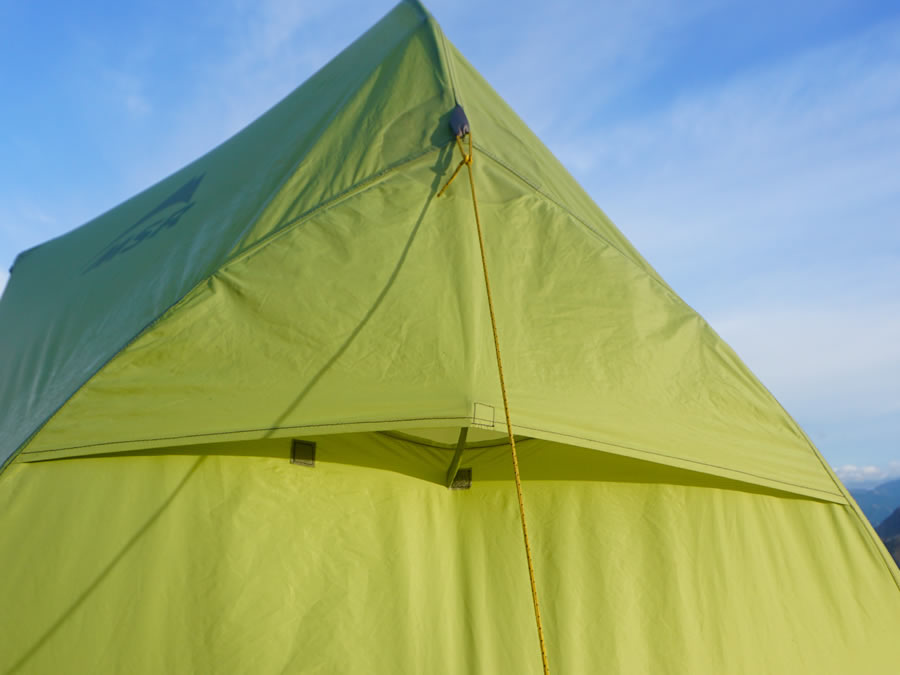

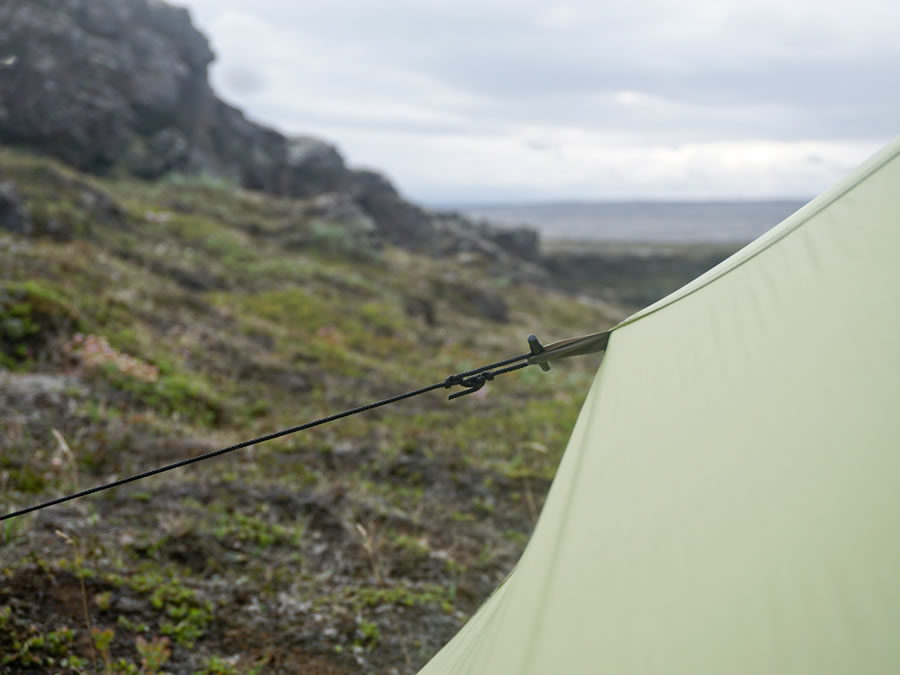
In contrast to the great design of the structure, the interior pockets leave much to be desired. A gear loft is suspended taught from the ceiling but I’ve yet to have anything heavier than a pair of socks or gloves last the night wedged up there. Similarly, the edge pockets have a long, slender aspect ratio which restricts the usable storage space to just the opposing corners. I appreciated the small corner stich to prevent objects wedging themselves elusively into the depths of the fabric, but a further stich up the centre would have portioned it into a pair of much improved pockets and prevented heavier objects from rolling out with frustrating regularity. A small turn of fabric along the edges of gear loft would have had a similar effect. Minor changes perhaps, but with the potential to have a big impact.
I can recall initial concerns from when the tent first launched about the limited hydrostatic head of the tent’s flysheet fabric. I can’t speak for the science of the fabrics, but experience across forty nights in Iceland, New Zealand, Norway and the mountains of the UK have filled me with confidence in the water repellent strength of the fabrics. The Hubba Hubba HP is not without fault, additional guylines and fixes to the internal pockets are needed. The zip design on the porches requires an awkward leaning lunge to fully close the tent flaps at night. But these issues have proven only minor headaches in an otherwise excellent piece from Cascade Designs. Two years on I am yet to encounter a more reliable companion for the ever changing conditions of our mountainous landscapes.
“Experience across forty nights in Iceland, New Zealand, Norway and the mountains of the UK have filled me with confidence in the water repellent strength of the fabrics”
